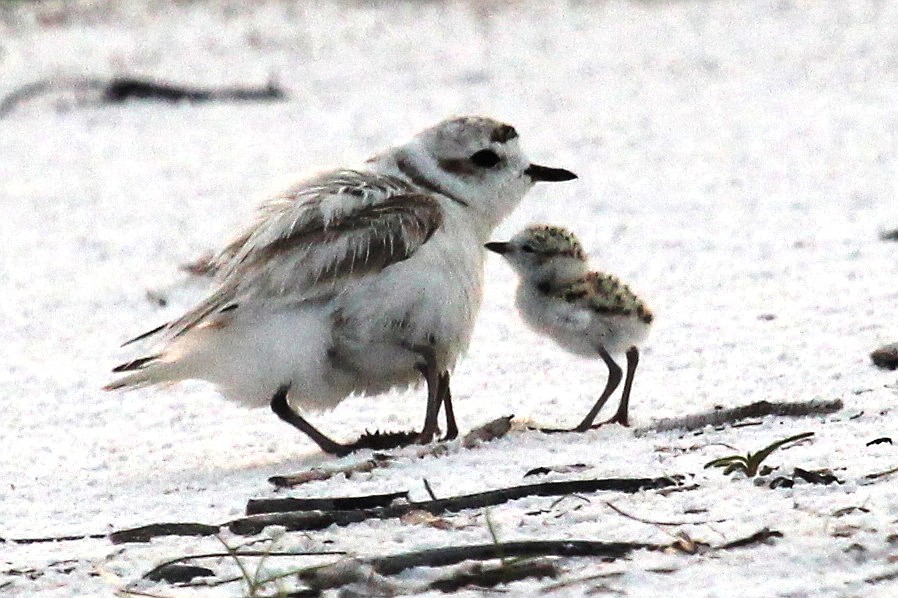- November 28, 2024
-
-
Loading

Loading

Throughout the holiday week, YourObserver.com will be counting down the top 12 stories of 2011 (one from each month) from our Longboat, East County and Sarasota Observers and the Pelican Press. Check back each day for a reprinting — along with any relevant updates — of the biggest news items of the year.
ORIGINALLY PUBLISHED SEPT. 1, 2011
Six snowy plover chicks this year reached the fledgling stage, the point of flying on their own, Sarasota Audubon Society volunteers reported. That tally is just one fewer than the 2010 number for the county.
Furthermore, the Black Skimmer population was even more successful, with more than 80 chicks becoming fledglings.
The endangered beach-nesting birds were divided among Siesta, Lido and Longboat keys, said Bonnie Samuelson, manager of volunteers assisting with the 2011 nesting effort. Altogether, nine Snowy Plover chicks hatched in three different locations, she said.
In quiet area on the Sarasota side of Longboat Key, 80 Black Skimmer chicks fledged. One of the managers of the property and a nearby resident especially helped watch over those chicks, Samuelson said.
This was the first year the local Audubon chapter had hired project managers to help watch over the birds, which typically nest on the beaches from February through August. Samuelson worked with Ruth Ellen Peipert to coordinate volunteer efforts and educational outreach. Both women have been volunteering for many years to aid endangered species nesting in Sarasota County.
Samuelson said she and Peipert had help from Jerris Foote, a biologist with Sarasota County Parks and Recreation.
Jeanne Dubi, president of Sarasota Audubon, solicited for donations last spring to pay for part-time managers. Samuelson said funding came through not only from community residents but also from grants. Together, Samuelson said she and Peipert worked with about 50 volunteers.
Weekends and holidays were the most important times for volunteers to be on the beaches, Samuelson said. Although Sarasota County Parks and Recreation did not have to close any Siesta beach access to pedestrian traffic this year, volunteers kept a lookout for people approaching the nesting areas, which were marked with yellow tape. Whenever an individual came close to one of those buffered areas on Siesta beach, she said, volunteers were quick to take the opportunity to explain about the birds.
Moreover, she said, volunteers worked hard this year again in the “chick trail” effort. They followed baby birds on the beach as the chicks scampered away from nests to explore their surroundings.
“(The chicks) may go walking … with hundreds of people out there that have kites and balls” and all sorts of items that could pose a danger to the baby birds, Samuelson said. “We’re building that beach steward program.”
Samuelson pointed out that the chicks “are a little bigger than your thumb.” When they are frightened, “their defense is to hunker down in the sand and hide,” which makes it all the more important to have someone watching out for their safety, especially when a lot of people are around.
Catherine Luckner, president of the Siesta Key Association, and her husband, Bob, were among the volunteers again this year on Siesta Public Beach. Catherine Luckner also emphasized the plovers’ nesting success but said the birds did suffer this year because of dogs.
Although county regulations forbid dogs on the public beaches, Luckner said: “People still don’t get the dog issue. They let ’em off leash, and (the dogs) run.”
Dogs, experts said, can be detrimental to the birds’ success.
“There’s a good chance that bird won’t come back (if dogs scare them),” said Dr. Allan Worms, a retired wildlife biologist who also served again as a volunteer this year.
Additionally, Luckner said, the thousands of people who flocked to the Siesta Public Beach after it was ranked No. 1 in late May left lots of garbage behind them, which attracted crows, and crows are one of the biggest plover predators.
“We’ve got to work on the trash and the crows” she said. “Crows are so smart; they never forget a nest site.”
Worms said the county’s relocation of garbage cans to the beach accesses last year had helped, since people do put the bulk of their trash in those cans.
Along with the Snowy Plover success, Samuelson pointed to the fact that a pair of Black Skimmers nesting on Lido managed to get three chicks to the fledgling stage.
“To me, that was one of the most wonderful success stories,” she said.
The nest was near the Helmsley Sandcastle Resort, which was a big gathering spot for people watching the Suncoast Offshore Super Boat races over the July 4 weekend.
“We’re talking a mob scene,” Samuelson said.
The resort staff and guests were involved in the effort to protect those birds, she said.